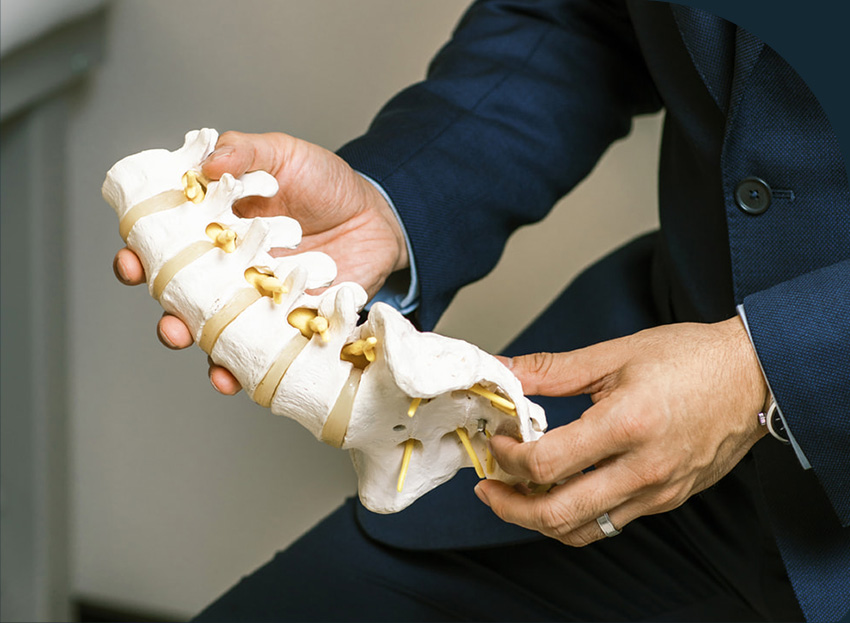
If you’ve been suffering from chronic back or neck pain, you may have been told that surgery is your only option for relief. And naturally, the thought of having open spinal surgery — not to mention all the risks, side effects and lengthy recovery processes that comes along with it — is probably a bit scary to think about.
But what if we told you that you can get all the benefits of spinal surgery with less damage to your muscles and tissues, faster recovery times and shorter hospital stays, and minimal interruption to your daily life? Well, trust the experts at Spine Medicine & Surgery of Long Island when we say that it’s not too good to be true. With minimally invasive spine surgery, you’ll be back to feeling like your pain-free self in no time.
In this post, Dr. Daniel E. Choi and his team will cover:
- What minimally invasive spine surgery is
- The benefits of MISS
- What conditions can be treated with minimally invasive spine surgery
What is MISS?
Minimally invasive spine surgery (also known as MISS) is exactly what it sounds like: a type of spinal surgery that can be done with minimal intervention or damage to the surrounding muscles and tissues. With conventional spinal surgery (also called open surgery or open back surgery), the surgeon must make a long incision down the back, then move the muscles and soft tissues out of the way in order to access the spine. Occasionally, the surgeon will also have to remove tissue to gain better access. This type of spine surgery ultimately involves significant trauma to the spinal area, leading to longer recovery time and increased postoperative pain.
However, thanks to advances in surgical technology, there is now another way to find surgical relief from spinal issues. Minimally invasive spine surgery removes the need for an invasive approach to spine surgery. With MISS, instead of a single large incision, our Harvard-trained orthopaedic surgeon Dr. Choi makes multiple smaller incisions, through which he can gently move the muscles and tissues aside, and then insert tiny surgical instruments. During the MISS procedure, he uses state-of-the-art imaging tools to visualize the spine in real-time. In addition to allowing for the most precise results, MISS has significant benefits to the patient’s recovery outcomes.
Why Choose Minimally Invasive Spine Surgery
MISS uses revolutionary technology to preserve muscle and tissue, and to protect the healthy areas of the spine. While open surgery can indeed help resolve back and neck pain conditions, the recovery itself can be long and painful. When you choose MISS, you’ll benefit from the following:
- Shorter Recovery Time: With MISS, recovery is easier and faster than with traditional open surgery. You’ll have a shorter hospital stay and a quicker recovery overall, which means you’ll be able to return to your normal activities before you know it.
- Less Trauma to the Spinal Area: MISS procedures involve much smaller incisions than traditional open surgery, which cause less damage to the nearby muscles and soft tissues. This also means you’ll be left with a smaller scar.
- Less Postoperative Pain: Since minimally invasive techniques cause less nerve and tissue damage, your recovery will be less painful.

Am I Eligible for Minimally Invasive Spine Surgery?
Fortunately, minimally invasive spine surgery can treat a wide range of neck and spinal concerns, from herniated discs to spinal tumors to a host of other conditions. Wondering if you’re eligible for MISS? Here are some of the minimally invasive spine surgery procedures we offer at Spine Medicine & Surgery of Long Island:
- Lumbar Disc Microsurgery: This minimally invasive spine procedure removes the herniated portion of a disc in the lower back that’s compressing the nerves and causing sciatica. The healthy portion of the disc remains intact, so it can continue to provide support and cushioning for your spine.
- Percutaneous Pedicle Screw Instrumentation: This procedure involves inserting cannulated needles into the center of the pedicle (the stub of bone that connects the front and back of a vertebrae) to provide stability and fusion when treating spinal pathologies, including tumors, deformities, trauma and degenerative diseases.
- Anterior Cervical Discectomy and Fusion: In this minimally invasive neck surgery, Dr. Choi removes a damaged disc to take pressure off the spinal cord and nerve roots in order to reduce corresponding pain, weakness, tingling and numbness.
- YESS Discectomy: This type of minimally invasive spine surgery uses miniature-sized instruments to remove herniated, or damaged, disc material to decrease pain and other symptoms.
- Oblique Lumbar Interbody Fusion (OLIF): This type of minimally invasive spine surgery uses an anterior approach through the abdomen to minimize muscle trauma. This is the type of spine surgery that Tiger Woods underwent to quickly return back to playing professional golf.
- Minimally Invasive Interbody Fusion: Performed to treat degenerative disc disease and/or nerve compression, minimally invasive interbody fusion uses cutting-edge technology to create a strong, stable spine and provide relief from pain with less trauma than traditional open surgery.
Neck and back pain should never get in the way of living your life to the fullest. With minimally invasive spine surgery, Dr. Choi aims to help his patients get back to doing the things they love. Ready to find out if MISS is right for you? Contact Spine Medicine & Surgery of Long Island today to book a consultation with our spine specialist in Ronkonkoma or Garden City, NY.



